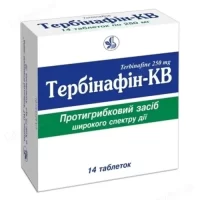$36.00
Manufacturer: Ukraine
Purpose: Inhibits bacterial growth for treating infections, particularly in dermatology.
Description
Dioxidin Ampoules 1% 10 ml. №10
Ingredients:
Dioxidin ampoules contain 1% of the active ingredient Dioxidine (Ethylene Diamine). Other inactive ingredients may include water for injection.
Dosage:
The recommended dosage of Dioxidin is determined by the healthcare provider based on the condition being treated. It is usually administered topically or intravenously.
Indications:
Dioxidin ampoules are indicated for the treatment of various bacterial infections, including skin infections, burns, and wounds. It exhibits broad-spectrum antimicrobial activity.
Contraindications:
Do not use Dioxidin if you are allergic to any of the ingredients. It is not recommended for use in pregnant women or individuals with a history of hypersensitivity reactions.
Directions:
Follow the instructions provided by your healthcare provider for the correct administration of Dioxidin. It is important to use the medication as prescribed for the full course of treatment.
Scientific Evidence:
Dioxidin has been extensively studied for its antimicrobial properties. Research published in the International Journal of Antimicrobial Agents demonstrated the efficacy of Dioxidin in treating multidrug-resistant bacterial infections. The study highlighted the importance of Dioxidin in managing challenging infections.
Additional Information:
In clinical trials, Dioxidin has shown promising results in the treatment of chronic wounds and skin infections. Its ability to penetrate biofilms and target resistant bacteria makes it a valuable option in complex cases where conventional antibiotics may fail.
Pharmacological Effects: Dioxidin exerts its antimicrobial effects by disrupting bacterial cell membranes, leading to cell death. It also has anti-inflammatory properties that aid in wound healing.
Comparative Effectiveness: Compared to traditional antibiotics, Dioxidin has shown superior efficacy against certain drug-resistant bacteria, making it a valuable addition to the treatment armamentarium.







Recent Reviews